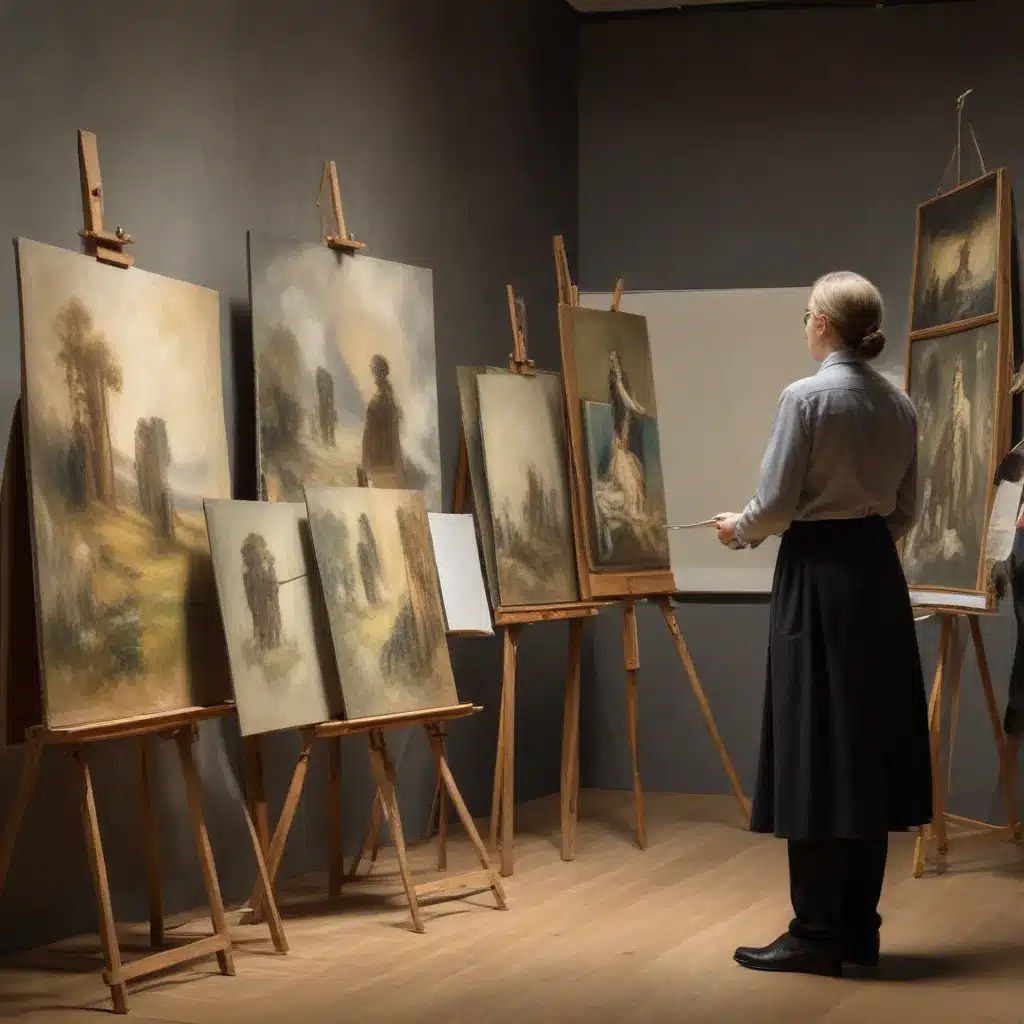
The Role of Expertise in Artistic Creativity and Aesthetic Appreciation
When it comes to the production and evaluation of visual art, the level of expertise plays a crucial role. While both experts and non-experts can appreciate the beauty of a work, experts often have a distinct advantage in recognizing and creating creative, innovative pieces.
Expertise and the Creation of Artistic Compositions
One key finding from recent research is that expertise has a greater impact on the creation of creative artworks compared to the production of beautiful ones. In a series of experiments, researchers examined how individuals with varying levels of artistic expertise approached the task of composing visual compositions.
In the first experiment, participants were asked to create the “most beautiful” picture using a set of simple geometric elements. The results showed that both experts and non-experts largely agreed on what constituted beauty, tending to produce compositions with a typical, prototypical arrangement of the elements. This suggests that the creation of beautiful art does not necessarily require a high level of expertise.
However, when the task shifted to composing the “most creative” picture, a different pattern emerged. Experts were better able to move beyond the typical and produce novel, innovative compositions. They were more likely to create abstract, asymmetrical, or semantically interpretable artworks, demonstrating a willingness to deviate from the prototypical.
In contrast, non-experts often attempted to show their creativity through small deviations within the realm of the familiar and recognizable. Their compositions, while not entirely typical, still remained relatively close to the prototypical arrangement.
This difference in approach highlights the role of expertise in the creative process. Experts possess a more elaborate mental representation of artistic categories, allowing them to recognize and produce works that challenge conventional expectations. Their deeper understanding of the domain enables them to suppress their initial, automatic response to typicality and engage in a more thoughtful, controlled exploration of novel possibilities.
Expertise and the Evaluation of Artistic Compositions
The experts’ advantage in the creation of creative artworks was also evident in the evaluation phase of the experiments. When asked to rate the creativity and beauty of the compositions, the experts (particularly those with the highest self-reported expertise) demonstrated a distinct perspective.
While non-experts and lower-level experts tended to rate the more typical, prototypical compositions as the most beautiful, the highly experienced experts were more critical of these works. They recognized that beauty alone does not necessarily equate to creativity and were more attuned to the innovative, challenging aspects of the compositions.
Interestingly, the experts’ creativity ratings were positively correlated with the actual expertise level of the creators. In other words, the experts were able to identify the most creative individuals based on an evaluation of their artistic products. This suggests that experts possess a refined understanding of creativity that allows them to make accurate assessments.
In contrast, the non-experts’ ratings often showed a negative correlation with creator expertise, indicating that they tended to view the works of non-experts as more creative. This may be due to their reliance on more intuitive, immediate aesthetic responses rather than a deeper, more nuanced understanding of creativity.
Implications for Identifying Creative Individuals
The findings from this research have important implications for the identification and assessment of creativity, particularly in the artistic domain. While non-experts may struggle to accurately recognize creative individuals, the evaluations of experts can provide a more reliable and valid assessment.
By incorporating the ratings of both experts and non-experts, researchers were able to improve the prediction of creator expertise. The experts’ assessments directly captured the creativity of the artworks, while the non-experts’ ratings, though misaligned, still offered systematic information that could be used to infer the creators’ level of expertise.
This dual-perspective approach highlights the value of incorporating expert judgment in the evaluation of creative products. While non-experts may provide a useful, intuitive assessment, the more refined and nuanced perspective of experts can offer deeper insights into the nature of artistic creativity.
Fostering Creativity through Expertise Development
The findings from this research suggest that developing expertise in a domain can be a crucial factor in cultivating creativity. By deepening one’s understanding and mental representations of artistic categories and techniques, individuals can move beyond the typical and explore more innovative, challenging possibilities.
For those aspiring to develop their creative abilities, investing time and effort into building domain-specific expertise can be a valuable strategy. This might involve formal training, mentorship from experienced professionals, or immersive engagement with the artistic medium.
As individuals progress in their expertise, they may find that their creative process shifts from a reliance on intuitive, prototypical responses to a more deliberate, cognitively-driven exploration of novel ideas. This shift can lead to the production of more innovative, boundary-pushing works that challenge the norms of the domain.
Moreover, the development of expertise can also enhance one’s ability to recognize and appreciate creativity in the works of others. By cultivating a more refined understanding of the field, individuals can move beyond a simplistic evaluation of beauty or technical skill and gain a deeper appreciation for the creative elements of a work.
Conclusion
The role of expertise in the creation and evaluation of visual art is a complex and nuanced topic. While both experts and non-experts can appreciate the beauty of artworks, the experts’ deeper understanding of the domain allows them to recognize and produce more creative, innovative compositions.
By exploring the differences between experts and non-experts in the artistic realm, researchers have shed light on the cognitive processes and mental representations that underlie creative thinking. This knowledge can inform educational and training programs aimed at fostering creativity, as well as provide insights into the assessment and identification of creative individuals.
As the field of visual art continues to evolve, the interplay between expertise and creativity will undoubtedly remain a crucial area of study, offering valuable insights into the nature of human expression and innovation.












